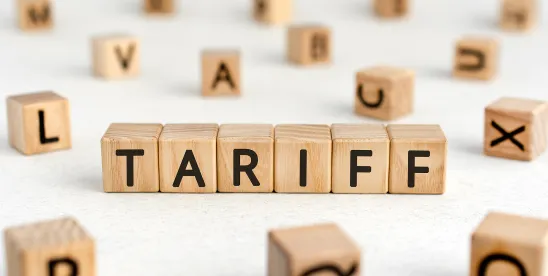Key Takeaways
- As the August 1 deadline approaches, the U.S. has reached trade deals with several countries that lower U.S. tariff rates in exchange for increased market access and investments benefiting U.S. industries.
- Countries such as the EU, Japan, and Indonesia agreed to major purchases, tariff reductions, and strategic investments while others like Vietnam and the Philippines offered full or partial tariff eliminations on U.S. goods.
- Several key trading partners, including India and China, have not yet reached agreements and face potential tariff increases if no deals are made.
Since President Trump extended the pause on country-specific reciprocal tariffs to August 1, 2025, and notified certain countries of an anticipated tariff increase absent a deal, the Administration has reached deals with several countries. The trade deals generally result in lower tariff rates for those countries and increased opportunities U.S. companies to export to those countries. In the meanwhile, other countries – including major U.S. trading partners – still face the risk of significantly increased tariff rates if there are no additional extensions for ongoing negotiations beyond August 1.
The country-specific tariff rates that reflect the trade deals reached so far as of July 30, 2025, can be found here. The country-specific tariff rates announced in early July can be found here. The country-specific tariff rates originally announced on April 2 can be found here.
The Administration has reached agreement with the following countries in connection with the country-specific reciprocal tariffs:
South Korea: On July 30, President Trump announced that the United States has agreed to a trade deal with South Korea. Under the deal, goods imported from South Korea into the United States will be subject to a baseline 15 percent tariff rate while goods imported from the United States into South Korea will enter free of duty. According to President Trump, South Korea will invest $350 billion “owned and controlled by the United States” and purchase $100 billion worth of LNG or other energy products. In addition, President Trump announced that South Korea would be completely open to trade with the United States and accept American products including cars, trucks, and agricultural products.
European Union: On July 27, the United States and the European Union (EU) announced a trade agreement, which would subject most imports from the EU to a baseline 15 percent tariff rate and the EU agreed to purchase $750 billion in U.S. energy and make new investments of $600 billion. While the 15 percent tariff is expected to cover products across sectors including automobiles, the applicability of the 15 percent tariff to pharmaceuticals could be impacted by the results of the ongoing Section 232 investigation of pharmaceuticals. As for metals, although the specific terms of the U.S.-EU deal need to be reviewed, it has been reported that Section 232 tariffs on steel and aluminum would remain at 50 percent although there appear to be ongoing negotiations regarding a potential quota or tariff rate quota.
Japan: On July 22, the Administration reached an agreement with Japan on trade and investment. As a result of this deal, imports from Japan will be subject to a baseline 15 percent tariff rate and Japan agreed to invest $550 billion, directed by the United States, in the U.S. strategic industrial bases such as energy infrastructure, semiconductor manufacturing and research, critical minerals, pharmaceutical and medical production, and commercial and defense shipbuilding. The United States will retain 90 percent of the profits derived from this investment. According to the White House, the deal also included Japan’s commitment to increasing imports of U.S. rice and energy, purchasing U.S.-made commercial aircraft, and lifting restrictions on U.S. automobiles.
Philippines: On July 22, President Trump announced a trade deal with the Philippines, under which imports from the Philippines would be subject to a 19 percent tariff rate. It has been reported that the Philippines would adopt zero tariffs on all imports from the United States although the Philippine President later clarified that the zero tariffs were applicable to automobiles imported from the United States. For further details, the text of the U.S.-Philippines trade deal will need to be analyzed.
Indonesia: On July 22, the White House released details of the U.S.-Indonesia trade deal, which reduced the U.S. reciprocal tariff rate for Indonesia from 32 percent to 19 percent. In exchange for the lower rate, Indonesia agreed to eliminate tariff barriers on over 99 percent of U.S. products exported to Indonesia and remove non-tariff barriers, such as certification and labeling requirements, for U.S. industrial and agricultural exports. The deal also included Indonesia’s commitments to take actions to address global excess capacity in the steel sector, adopt a forced labor import ban, and remove restrictions on exports to the U.S. The U.S. and Indonesia will negotiate rules of origin that would benefit both countries, not third countries, and committed to strengthen cooperation to increase supply chain resilience.
United Kingdom: On June 17, President Trump issued an executive order implementing the “U.S.-UK Economic Prosperity Deal” under which the UK committed to increasing market access for American exports, particularly for beef, ethanol, and certain other American agricultural exports, and to reducing or eliminating numerous non-tariff barriers that discriminated against U.S. products. In turn, UK car manufacturers can sell up to 100,000 vehicles to the United States at a reduced rate of 10 percent with any additional vehicles subject to the Section 232 tariff rate of 25 percent on automobiles. The United States also eliminated tariffs on UK engines and aircraft parts.
However, there are several items left to be negotiated, including tariff-rate quotas for UK steel and aluminum products, which are currently subject to 25 percent Section 232 tariffs, as well as potential preferential treatment for UK pharmaceuticals and their ingredients contingent upon the results of an ongoing Section 232 investigation, and adoption of a “structured, negotiated approach” to addressing U.S. national security concerns regarding other sectors that may be subject to future Section 232 investigations.
Vietnam: On July 2, President Trump announced that the U.S. had reached a trade deal with Vietnam, which would subject imports from Vietnam to a 20 percent tariff rate and a 40 percent rate for goods “transshipped” from third countries such as China. According to the President, Vietnam agreed to remove all tariffs on imports from the United States.
Several large trading partners have yet to reach an agreement with the United States. Of note, the U.S. and China continue to negotiate in advance of an August 12th deadline for higher tariffs to snap back on each country’s exports. Canada and Mexico, which were not included in the countries subject to the April 2 reciprocal tariffs, do not appear to be the focus of the Trump Administration’s trade negotiation efforts at this time. Similarly, negotiations with India do not appear to be on a positive trajectory. On July 30, President Trump announced his intent to impose a 25 percent tariff on imports from India.






 />i
/>i

